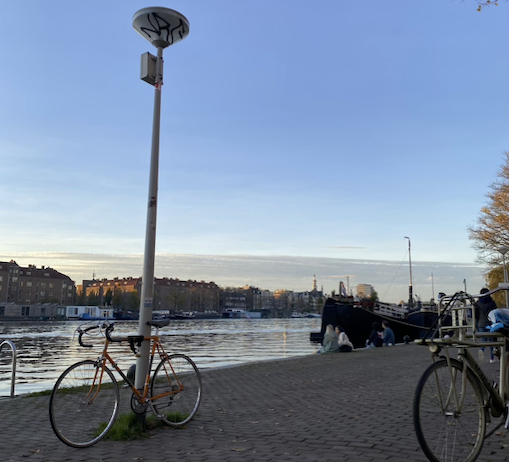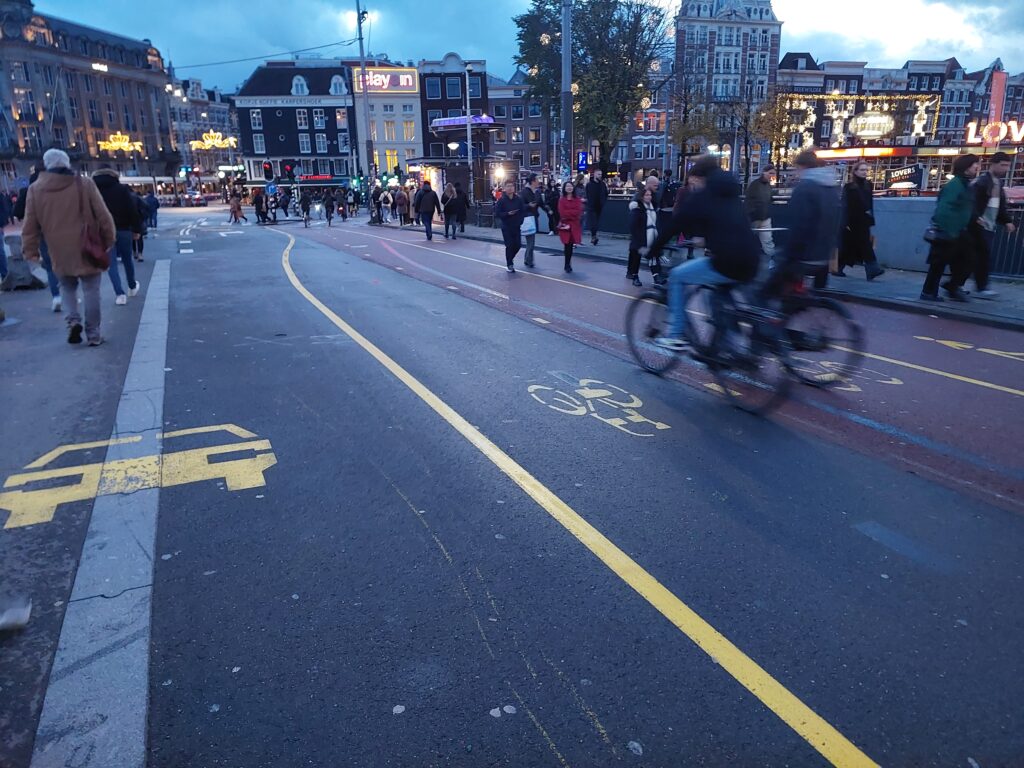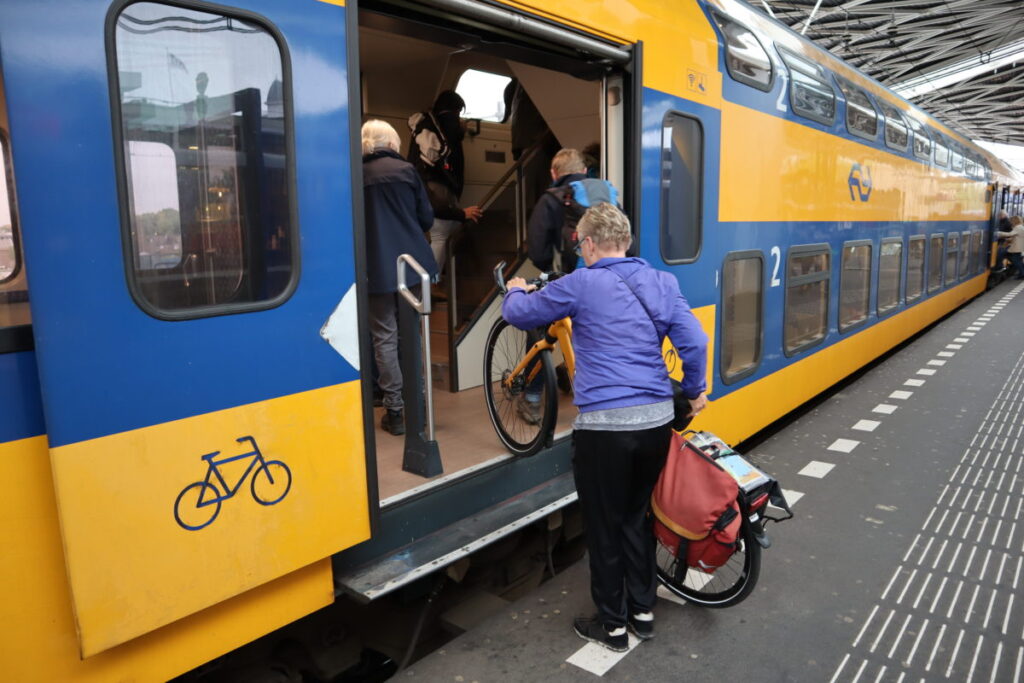Sebastian Gonzalez Tovar | LinkedIn
Selected final essay, published 10 March 2021
Sebastian is a highly creative architect, independent artist, and amateur gardener currently based in Bogota who seeks new experiences in design, landscape architecture, and urbanism.
Unraveling the Cycling City MOOC on Coursera
I’ve been cycling in Bogota for 6 years and I’ve seen improvements, but also a lot of mistakes in its urban cycling culture. As an architecture student who cycles, the more I progressed with my career, the more concerned I felt about the use we give to public spaces and roads. As students, we are being prepared to face “the real world”, so our projects are often guided towards a lot of car facilities by the country’s design code. Are those who designed this code aware of the disaster they have conceived?
In 2018, Bogota became one of the busiest cities worldwide wherein a driver can spend around 272 hours per year in a traffic jam. 1 The media blamed the lack of an efficient public transport system, lack of roads for cars and, believe it or not, a growing number of cyclists turning to the car streets. But, why is the number of cyclists increasing in the car-centered capital of the car-centered country?
Cyclists like myself using the roads aren’t the cause of the problems, but are the consequence of poorly executed urban designs. Since the 1990s the city has been building different types of bicycle infrastructure. The first 10km appeared during the first mandate of mayor Antanas Mockus. He was followed by Enrique Peñalosa, who installed the city’s first public transport system, the BRT TransMilenio. The world’s most comprehensive network of segregated bike lanes2. (around 300km) were built during his mandate.3 As a result, the number of cyclists increased and a cycling culture was created. Although this bike infrastructure brought huge improvements for cyclists, it also brought huge problems.
Most of these segregated lanes were designed and built over the sidewalk, making them uncomfortable to use as you are sharing the pedestrian space. Plus, cyclists must constantly yield to traffic at intersections. Over the years, the cyclists have had to return to the roads because these old bike lanes became crowded, slow and unsafe due to robberies targeting cyclists.
However, these problems helped to strengthen a tradition around mobility. This habitus began with the 1974 citizen initiative, Ciclovia Recreativa or Car-free Sunday, in which some major and important roads were restricted to traffic and opened for cyclists and pedestrians only.4 This became so successful that it blossomed as a ritual for many of Bogota’s residents. It is perhaps a paradox that such a polarized society, often separated by economic, social or racial differences during weekdays could unite for a Sunday morning activity that has only been stopped by the Covid-19 pandemic.

Between 2000 and 2019, the city added 150 km of new bike lanes3 with improvements like separation from the pedestrian space, the amelioration of the intersections with the car traffic, the addition of traffic-calming and differentiation of space for cyclists with blue paint. Bicycle parking facilities in some of the BRTS-stations and public libraries were also added. By the end of 2019, the city ranked twelfth out of the twenty most bicycle-friendly cities worldwide. It is the only South American metropolis on the list, as well as one of the three cities in the Americas, joining Montreal (#18) and Vancouver (#19).6

Another positive development for cyclists occurred in 2019 when Claudia Lopez became mayor of Bogota. In addition to being the first woman and member of the LGBT community to attain this office, she also arrived for her possession ceremony on a bicycle.7 Her proposals for the mobility focused on the extension of greener alternatives to the Peñalosa BRTS, supporting the Cundinamarca province’s regional tramways project, Regiotram, the extension of the first Metro-Line and the addition of more bike-infrastructure instead.

The Covid-19 pandemic provided the perfect opportunity for the latter. Over 80km of temporary bike-lanes were created city-wide and were later made permanent. The overall bicycle network will consist of approximately 700km of infrastructure by August 20208.
As an architect, cyclist, and-most importantly- as an inhabitant of Bogota, I couldn’t be happier. From my designer perspective, I still have a lot of questions about the future of the city. While the conversion of the temporary bike lanes into permanent ones is a huge improvement, how long will it be before they have to be enlarged? Do these lanes and their intersections have an intuitive and safe design for new users, children or elderly people? Should Bogota follow the resilient designs of Copenhagen or the high investments in wide, dedicated, color-coded asphalt lanes for cyclists found in The Netherlands? 9, 10 Or, should Bogota embrace a hybrid between these two approaches as exemplified by the actions of Paris’s mayor, Anne Hidalgo? 11 The future of the city’s mobility and quality of life is a big concern, rather like the Netherlands in the 70’s, but we make Bogota very green if we get around Op de Fiets!
Research Sources:
- INRIX. “Global Traffic Scorecard”, 2018, https://inrix.com/scorecard/
- Oldenziel, Ruth & Adri A. de la Bruhèze. “Contested Spaces: Bicycle Lanes in Urban Europe, 1900 – 1995”. Transfers 1, no. 2, 2011, p. 29.
- Smith, Ricardo & Jhan Kevin Gil Marin. “Sustainable Transport: The case of Bike-lanes system”. European Union Commite for the International Urban Cooperation. 2016, p. 2. (Original document in Spanish), https://iuc.eu/fileadmin/user_upload/Regions/iuc_lac/user_upload/ESP_Bogotá_- _Sistema_de_ciclorutas.pdf
- Instituto Distrital de Recreacion y Deporte. “Historia de la Ciclovia Bogotana”, consulted 2020, https://www.idrd.gov.co/historia-ciclovia-bogotana
- Kuipers, Giselinde. “The rise and decline of national habitus: Dutch cycling culture and the shaping of national similarity”. European Journal of Social Theory, 16 (1), 2012, p. 5.
- COPENHAGENIZE. “The most bicycle-friendly cities of 2019”, consulted 2020, https://copenhagenizeindex.eu/cities/bogota
- “Claudia Lopez, La Alcaldesa de La Cacerola”. Semana Magazine (Bogota, D.C.) 4 Jan. 2020, https://www.semana.com/nacion/articulo/simbolos-en-la- posesion-de-claudia-lopez/647146
- Instituto Distrital de Recreacion y Deporte. “Mapas de la Ciclovia”, consulted 2020, https://www.idrd.gov.co/mapa-ciclovia
- “Copenhague is Great… but its not Amsterdam” YouTube, uploaded by Not Just bikes, 23 Mar. 2020, https://www.youtube.com/watch?v=HjzzV2Akyds
- Fietsberaad Crow. (2016) Design Manual for Bicycle Traffic.
- “How the ’15-Minute City’ could help post-pandemic recovery”. Bloomberg, Patrick Sisson, 15 July 2020, https://www.bloomberg.com/news/articles/2020- 07-15/mayors-tout-the-15-minute-city-as-covid-recovery



